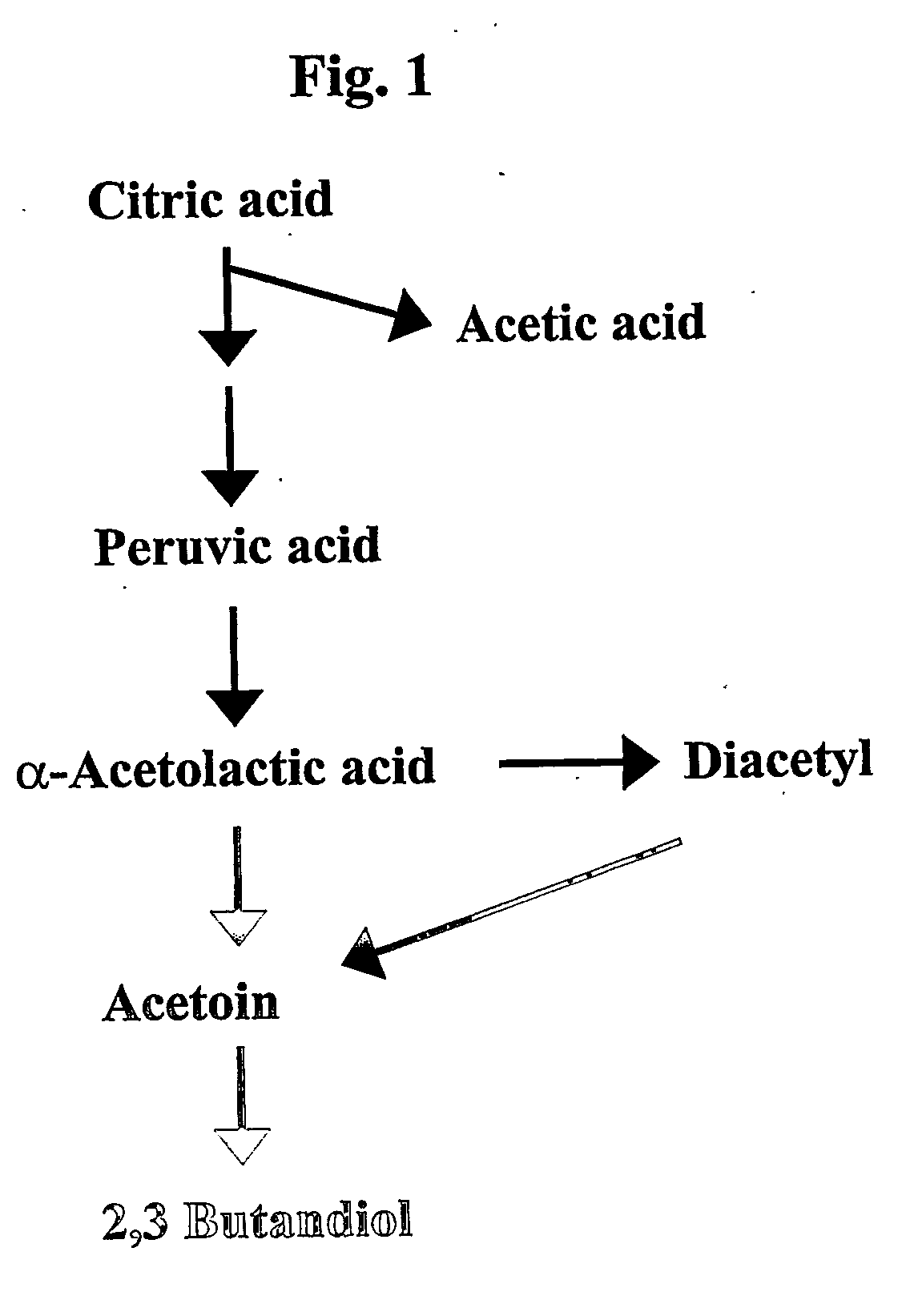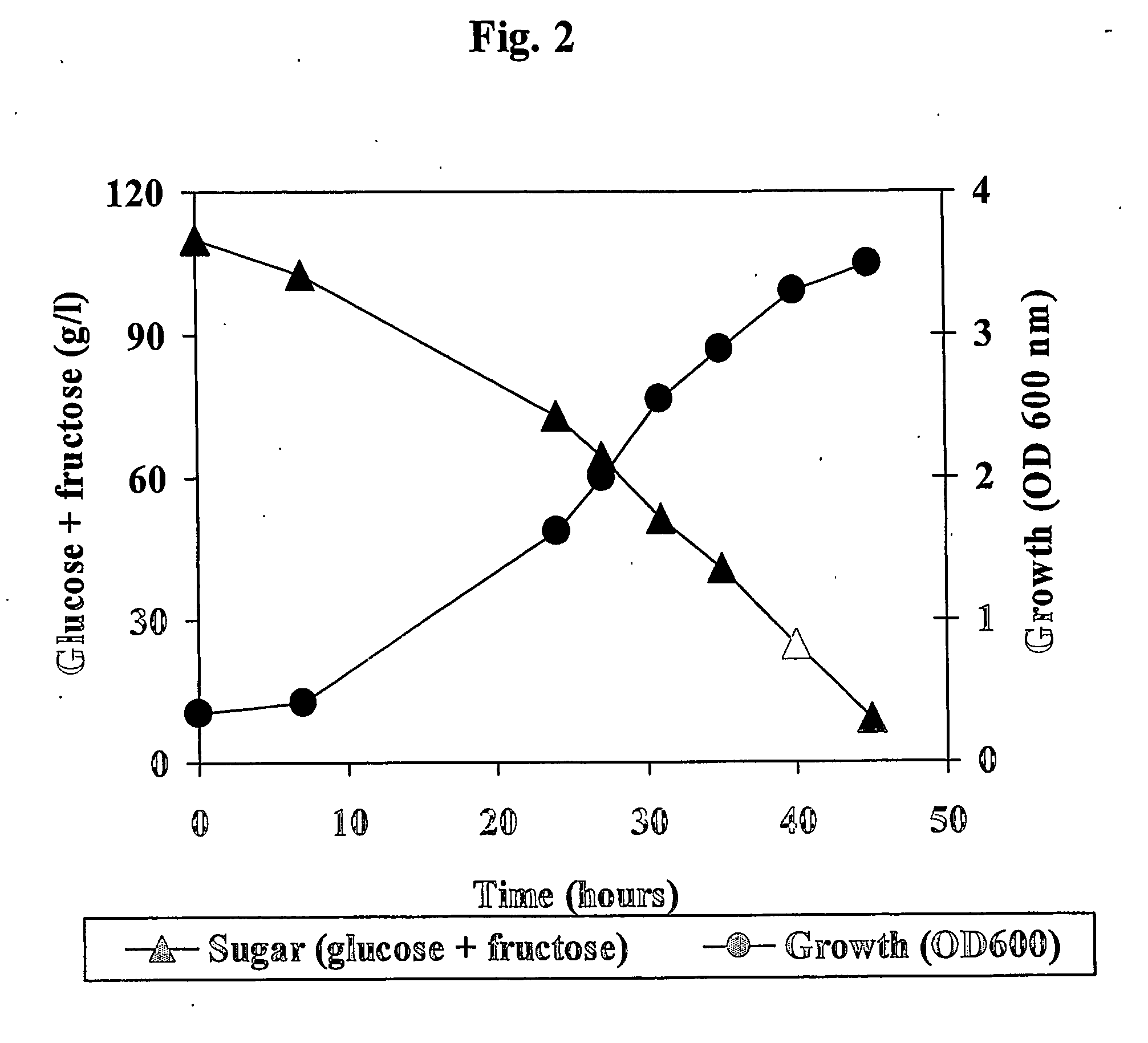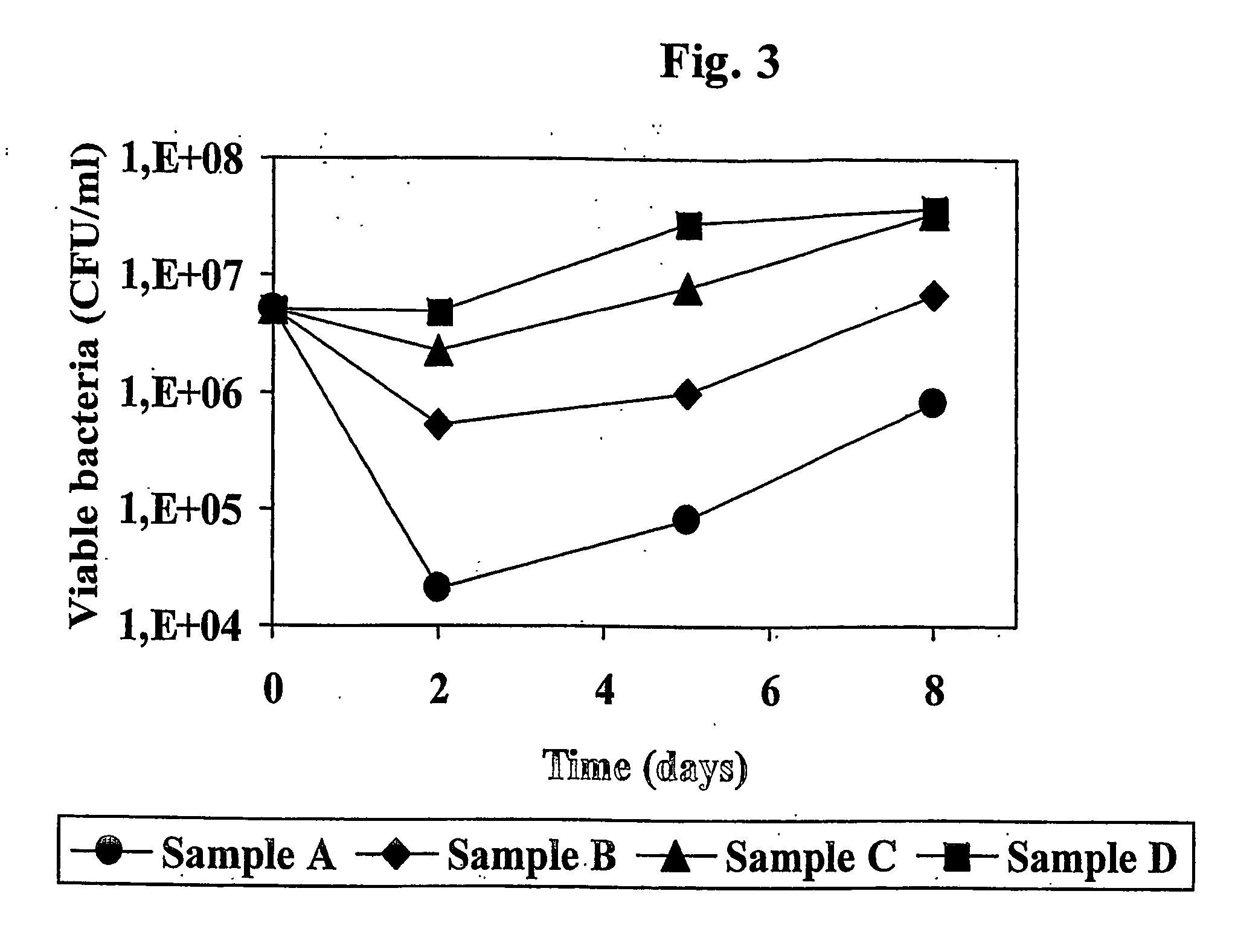Initiation of fermentation
a technology of initiation and fermentation, applied in the field of initiation of fermentation, can solve the problems of high undesired, undesired and unavoidable degradation of citric acid, and high undesired acetic acid
- Summary
- Abstract
- Description
- Claims
- Application Information
AI Technical Summary
Benefits of technology
Problems solved by technology
Method used
Image
Examples
example 1
Selection of Non-Citric Acid Fermenting Mutants of Oenococcus oeni.
[0260] Strains of Oenococcus oeni with resistance to pH below 3.2 and more than 13 vol % ethanol were isolated from different wines with completed spontaneously malolactic fermentation using techniques known in the art.
[0261] The objective of the mutagenesis of the Oenococcus oeni strains was to obtain mutants where the citric acid metabolism, depicted in FIG. 1, was eliminated. Mutagenesis of the Oenococcus oeni strains was carried out by adding 0.2 ml ethylmethanesulfunate to 10 ml of a stationary phase culture of Oenococcus oeni. After incubation of the mixture for two hours at 30° C., 0.1 ml was transferred to 10 ml fresh cultivation medium and incubated for 48 hours at 30° C. The composition of the cultivation medium was by weight: [0262] 2% glucose [0263] 2% fructose [0264] 2% yeast extract (Oxoid Ltd., England) [0265] 0.02% MnSO4+7H2O [0266] 0.2% Tween™ 80 [0267] pH adjusted to 5.0 with 20% NaOH.
[0268] Fro...
example 2
Preparation of Experimental Wine for Evaluation of Selected Non-Citric Acid Fermenting Oenococcus oeni Mutants.
[0277] A 5 litre sterile glass container was added 4 litre of sterile Biotta grape juice (Biotta AG, Switzerland) adjusted with sucrose to a total sugar concentration of 212 g / l and inoculated with 1.5 g of active dry yeast (Saccharomyces cerevisiae, Saint George S101, Fould-Springer, France). The juice was incubated at 23° C. After 14 days the alcoholic fermentation was completed and the wine was adjusted to pH 3.4 with 20% HCl. The concentration of total glucose and fructose in the wine was below 5 g / litre, the ethanol concentration was 12.0% (v / v), and the L-malic acid and citric acid concentration was 3.3 g / litre and 0.45 g / liter respectively. The glucose, fructose, ethanol, malic acid, and citric acid concentrations were determined by the enzymatic test kits of Boehringer Mannheim, Germany.
Examination of Selected Non-Citric Acid Fermenting Oenococcus oeni Mutants. ...
example 3
Induction of Malolactic Fermentation in the Experimental Wine by Direct Inoculation with Freeze Dried Preparation of Non-Citric Acid Fermenting Oenococcus oeni.
[0301] The malolactic fermentation induced by freeze dried preparation of the non-citric acid fermenting strain Oenococcus oeni DSM 15571, prepared as described for sample D in Example 2, was examined in 4 L experimental wine inoculated directly with the freeze dried sample to an initial concentration of 2×106 CFU / ml wine.
[0302] The results of this experiment are shown in FIG. 4 from which it appears that the survival rate of the strain was 90% measured 2 days after inoculation after which time the strains started to multiply in the wine and degrade the malic acid, which was exhausted after 10 days. The non-citric acid fermenting mutant did not degrade the citric acid in the wine and the concentration of acetic acid increased only from 390 to 450 mg / L during the experiment.
PUM
| Property | Measurement | Unit |
|---|---|---|
| pH | aaaaa | aaaaa |
| pH | aaaaa | aaaaa |
| pH | aaaaa | aaaaa |
Abstract
Description
Claims
Application Information
 Login to View More
Login to View More - R&D
- Intellectual Property
- Life Sciences
- Materials
- Tech Scout
- Unparalleled Data Quality
- Higher Quality Content
- 60% Fewer Hallucinations
Browse by: Latest US Patents, China's latest patents, Technical Efficacy Thesaurus, Application Domain, Technology Topic, Popular Technical Reports.
© 2025 PatSnap. All rights reserved.Legal|Privacy policy|Modern Slavery Act Transparency Statement|Sitemap|About US| Contact US: help@patsnap.com



